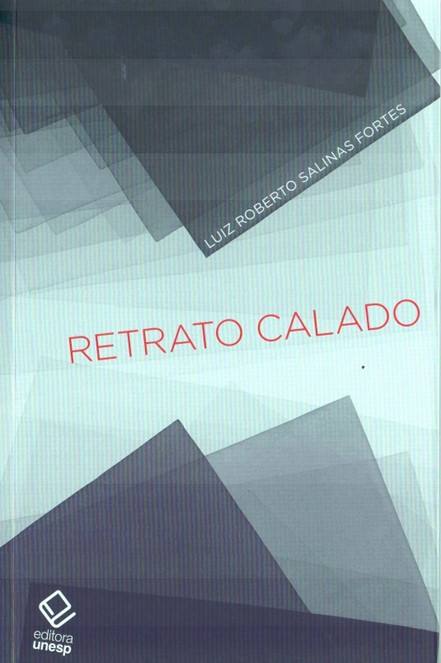Maria Helena Cruz Pistori, Associate Editor of Bakhtiniana, Post-doctorate student at Pontificate Catholic University of São Paulo (PUC-SP), São Paulo, Brazil.
Paulo Rogério Stella, Foreign Languages Executive Editor of Bakhtiniana, Universidade Federal de Alagoas – UFAL; Post-Doctorate – Pontificate University of São Paulo (PUC-SP), São Paulo, SP, Brazil.
Santiago Bretanha, from the Federal University of Pelotas (RGS), is the author of the article Between the Witness and the Word, the Duty to Speak: Testimony as the Object of an Anthropology of the Enunciation. The text analyzes Luiz Roberto Salinas Fortes’ book, Retrato Calado, in which, on the surface, the author describes the torture he suffered in different institutions during the 1964 Civil Military Dictatorship. The originality of the reflection constitutes an important contribution to the field of knowledge, interconnecting linguistics, philosophy and literature of testimony.
Bretanha presents us with an analysis based on (innovative) theoretical foundations, based on Valdir Nascimento Flores, and called Anthropology of Enunciation. It establishes an interconnection with the studies of the philosopher Giorgio Agamben and the linguist Émile Benveniste, shedding new light on enunciation and subjectivity in language. In terms of linguistics, it is treated as “anthropological knowledge, which does not look at ‘pathology’, but at man’s presence in language” (FLORES, 2019a, p.300).
As can be seen, there are different theoretical voices that allow us to understand essential aspects of the subject who “speaks” in and with society. In Bretanha’s words,
the analytical gesture carried out assumes linguistics as knowledge about man in his loquens property, specifically at the moment in which one singularizes in/through discourse (…) Retrato Calado, in reverse, by opposing the minimal pairs in Portuguese, “/k/alado” [silenced] and “/f/alado” [spoken], it suggests that this reconstitution of the subject’s image does not occur through what is said, but through what is silenced (p.10).

Image: Cover of the book Retrato Calado by Luiz Roberto Salinas Fortes published by Editora Unesp.
During the reading of the text, many aspects give rise to reflection and questioning, both in terms of the theories invoked, as well as the lived experience. Some are proposed by Bretanha: which would be the finished construction, the spoken portrait or the silenced portrait? Are processes open or not? Does one precede the other? What relationships would there be between the author of the book, evidently traumatized to the point of having his speech altered, and the writing? The relationship between writing and testimony, which would seem simple and evident, is particular, replies Bretanha, because “the one who writes [Salina Fortes] does so by questioning the role of his enunciation, about the meanings that the language inscribes about itself and about violence” (p.13).
The analysis expands what can only be taken as a confessional biographical statement (of pain, violence, denunciation…), allowing the reader to reflect on the limits between the duty to speak/write and the testimony. It is a voice that dialogues with others, rejecting the imposed monologism, contrary to the “variety and richness that exists in human communication” (SCHNAIDERMAN, 2013, p.14). And in this dialogue with oneself, with the other and with one’s own experience, through language, we observe that, as Bakhtin would say,
In this dialogue a person participates wholly and throughout his whole life: with his eyes, lips, hands, soul, spirit, with his whole body and deeds. He invests his entire self in discourse, and this discourse enters into the dialogic fabric of human life, into the world symposium (1984, p.293).
In this sense, this is an article that clearly inserts the research of the language sciences in life, that is, in dialogic communication with society, since speaking (and being silent), in any of its modalities, is plural, and must be respected. May the reading of this and other texts presented by Bakhtiniana 17.2 be savored and serve for further research in a broad spirit of democratic and anti-authoritarian affirmation.
References
BAKHTIN, M. Reformulação do livro sobre Dostoiévski. In: BAKHTIN, M. Estética da criação verbal. Tradução de Paulo Bezerra. São Paulo: Martins Fontes, 2006.
BRETANHA, S. Entre a testemunha e a palavra, o dever falar: o testemunho como objeto de uma Antropologia da Enunciação. Bakhtiniana, Rev. Estud. Discurso [online]. 2022, vol. 17, no. 2, pp. 9-28, ISSN 2176-4573 [viewed 5 July 2022]. https://doi.org/10.1590/2176-4573p54220. Available from: https://www.scielo.br/j/bak/a/mP3WRLKND5j3QCBtkv93kbT/?lang=pt
FLORES, V.N. O escafandro e a borboleta: ou o testemunho da fala que falta ao falante. In: FLORES, V.N. Problemas gerais de linguística. Petrópolis: Vozes, 2019.
SCHNAIDERMAN, B. Bakhtin 40 graus (Uma experiência brasileira com a sua obra). In: BRAIT, B. (Org.). Bakhtin, dialogismo e construção de sentido. Campinas: Editora da UNICAMP, 2013.
To read the articles, access
BRETANHA, S. Entre a testemunha e a palavra, o dever falar: o testemunho como objeto de uma Antropologia da Enunciação. Bakhtiniana, Rev. Estud. Discurso [online]. 2022, vol. 17, no. 2, pp. 9-28 [viewed 5 July 2022]. https://doi.org/10.1590/2176-4573p54220. Available from: https://www.scielo.br/j/bak/a/mP3WRLKND5j3QCBtkv93kbT/
Link(s)
Bakhtiniana. Revista de Estudos do Discurso: https://www.scielo.br/j/bak/
Bakhtiniana, vol. 17, no.2: https://www.scielo.br/j/bak/i/2022.v17n2/
Maria Helena Cruz Pistori: https://orcid.org/0000-0003-0751-3178
Como citar este post [ISO 690/2010]:



















Recent Comments